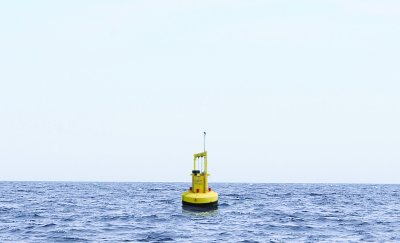On a windless morning this past September, Oregon State University researchers towed a prototype wave energy buoy off the coast of Newport and dropped anchor.
THE COAST On a windless morning this past September, Oregon State University researchers towed a prototype wave energy buoy off the coast of Newport and dropped anchor. The device looked like a flattened yellow doughnut, 10 feet in diameter, with a phone pole sticking up through the hole, six feet high. With each swell, the pole bobbed up and down, generating an electric current that was monitored by scientists hunched over computers. The hours passed, the buoy bobbed up and down, while a light on top of the pole blinked a gentle staccato that could have been code for, “You were wrong. You were wrong. ”
Critics — including a certain statewide business magazine — have predicted a downturn in wave energy projects because of the credit crisis. There’s no doubt that the implosion of the banking industry and stock markets is affecting the growth of new projects. Funding for experimental energy projects has all but disappeared, according to Edward Einowski, a partner at Stoel Rives who specializes in the finance and development of renewable energy projects.
But this summer the U.S. Department of Energy gave OSU the final piece of the $13.5 million needed to build what will be called the Northwest National Marine Renewable Energy Center in Newport. In September, 70 miles to the north, Tillamook County officials applied for federal permits to develop six potential wave energy sites. And OSU researchers published a study that for the first time verifies some of the impacts of wave energy projects on waves, fish and the shoreline.
As Hatfield Marine Science Center director George Boehlert put it: Up to this point, wave energy technology has been ahead of ecological research. The study doesn’t show an inherently positive or negative impact of wave energy projects. Instead, the research will allow the state, the energy industry and the fishing industry — which is deeply concerned about projects’ impact on fishing grounds — to develop guidelines for future potential projects.
As for the prototype buoy, it was towed to shore after the successful 24-hour test, its little light blinking all the way home.
ABRAHAM HYATT
Have an opinion? E-mail [email protected]


